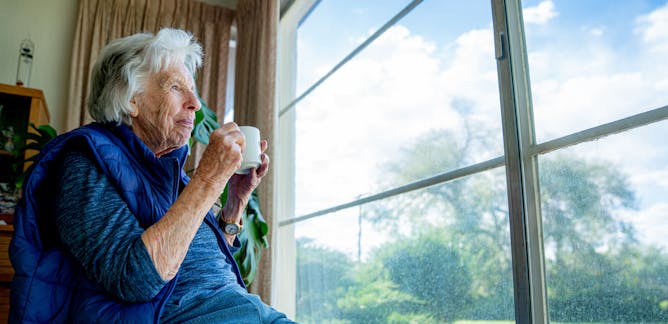
Articles on Long-term care
Displaying 1 - 20 of 51 articles

What happens in November 2024 could influence other states weighing their own options.

Most caregiving work is done by women. However, many contend with trying to balance their caregiving responsibilities with their own well-being and aspirations.

Not only is the health sector feminized, but women — particularly racialized women — are more likely to be in jobs at the low end of the pay scale, but that require prolonged contact with patients.

Gays, lesbians and other sexual minorities can face significant economic challenges with age.

Publicly funded primary and home care should be accessible to all older adults, regardless of where they live.

While both nursing homes and home care impose financial burdens, their differing structures can influence how older Canadians save money.

Increasing the number of older people with both Medicaid and Medicare would mean fewer of them would be forced to skimp on the care and treatment they need.

Long-term care workers experienced mental health challenges and moral distress during the pandemic. Research shows why workplace standards and support for workers are crucial to the future of LTC.

COVID-19 is the third-leading cause of death in Canada, but it’s older people who are dying. That we accept this and carry on as if the pandemic is over reveals our ageism: We don’t value older people.

Privatization is an idea that — like a zombie —just won’t die. It’s re-emerging with calls to solve the long-term care crisis with for-profit care homes. Evidence refutes the same old arguments.

The long-term care sector is currently being held together by a very vulnerable workforce, and is at risk of failing without immediate solutions.

The future of our health system depends on recruiting and retaining passionate and highly skilled health-care workers. It’s essential to build work environments where they feel supported and safe.

Canada’s whistleblowing laws aren’t working, and governments don’t seem to care. This puts all of us at risk.

Delirium doesn’t just harm vulnerable seniors. It prolongs hospital stays, ties up beds and clogs emergency rooms. Mandating senior-friendly hospital care protects patients and the health-care system.

Family caregivers of residents in longterm care homes experienced a collective trauma as they were kept away from their loved ones during the pandemic. This isolation has long-ranging impacts.

When political candidates talk about their long-term care proposals, let’s remember there isn’t much point unless we recruit and adequately compensate enough workers to care for our loved ones.

Ontario voters can bring about change by prioritizing people over profits and casting our ballots for those committed to transforming long-term care into a non-profit model focused on care.

Residents of group homes and long-term care are at high risk for COVID-19. But an important aspect has been left out of Public Health Ontario’s guidance for these facilities: indoor air quality.

It’s time to complete the picture and recognize public expenditures on supports for family caregivers as social investments in the well-being of individuals, families and communities

Our health-care system needs to respond in a more just, inclusive, caring and timely way to allow in-person final goodbyes from those who matter most to those at the end of life.
